Tag: 1800s
-
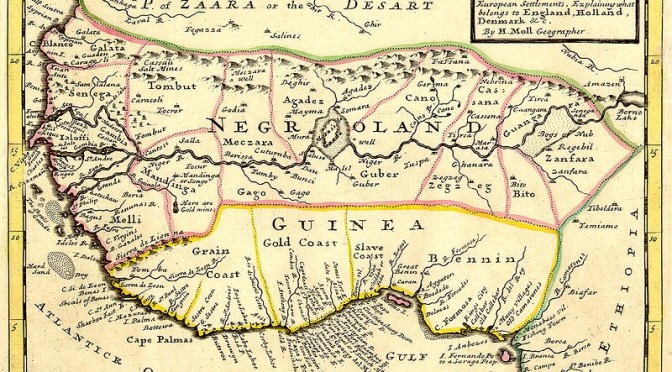
The Riddle of the Phantom Island
By Daniel Stinsky Maps contain lots of information in a condensed and abstract visual format. We trust maps to depict reality, and we trust that they are produced with scientific rigor. But as the fairly recent case of a “phantom island” in the Coral Sea shows, maps can contain false information, even in the age…
-
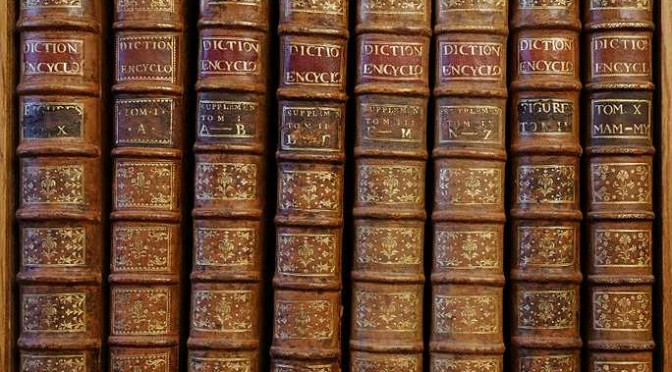
Grote dikke boeken
Door Floris Solleveld “Goedemiddag, ik had zeven boeken aangevraagd, ik weet niet of ze er al zijn?” “Jaaaa”, zei de bibliothecaris grinnikend, “die zijn er al”, en keek naar de kar waarop de Description de l’Egypte lag opgestapeld, zeven dozen van 100×70 cm, een stapel van zeker een halve meter hoog. En dit waren dan…
-
Boo! A peek into the iconography of the rearing dinosaur.
By Ilja Nieuwland Parisians who visited a newsstand or book store in the spring of 1886 were confronted with the frightening prospect of a dinosaurian intrusion into their sixth-floor apartments. It was introduced to them by a poster that was part of the advertising campaign for French author Camille Flammarion’s new book (and newspaper serial)…
-
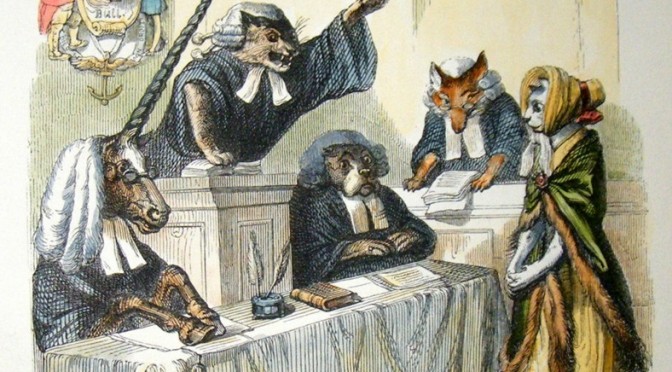
The case of the cat in court
By Noortje Jacobs and Steven van der Laan Do animals carry legal obligations? To the twenty-first century reader of Shells & Pebbles this question might appear to be odd. Surely, only in fables pigs are summoned to appear before a judge to be held accountable for any misdemeanour. Not quite. In past centuries, animal trials…
-
Headless chicken
By Ilja Nieuwland Ever wondered about the picture above? It is a lithographical engraving from 1866 depicting Archaeopteryx – without the head. Initially, I thought that I saw a head there, but apparently there isn’t. You see, this was drawn only five years after the London Archaeopteryx was discovered – which (at least initially) lacked…
-
Newman’s flying bats
By Ilja Nieuwland From: Edward Newman (1843), “Note on the Pterodactyle Tribe considered as Marsupial Bats”. The Zoologist 1, p. 129. Comment: “The upper figure represents Pterodactylus crassirostris, the lower, Pter. brevirostris”.
-
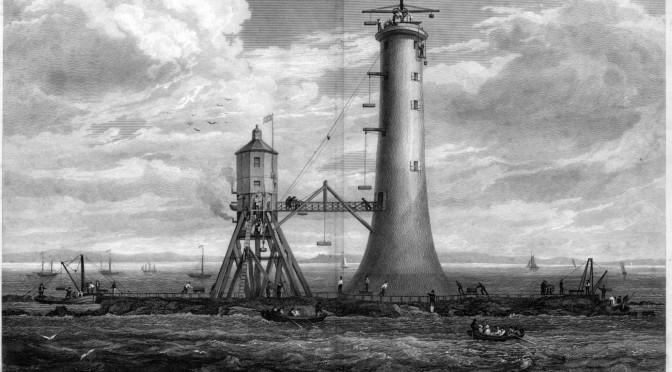
Bell Rock lighthouse
Door Daan Haalboom De Inchcape, of Bell Rock, een rots voor de kust van Schotland, is eeuwenlang het toneel geweest van talloze scheepsrampen. Het bij laagtij nét boven de waterspiegel uitstekende rif werd zo gevreesd door zeelieden dat zij vaak de zekerheid van een razende Noordzee en het gevaar van een stranding op de nabije…
-
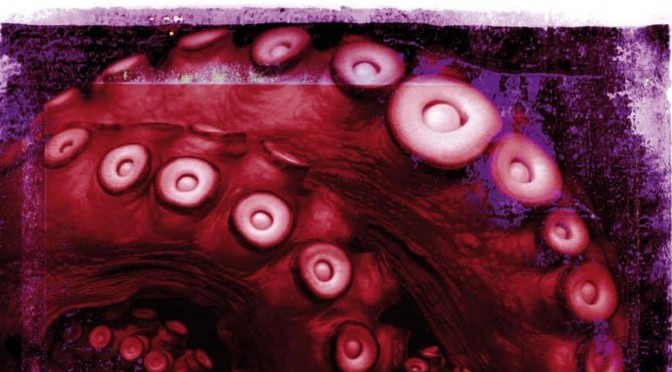
The Cult of the Kraken
By Robert-Jan Wille In 2010 a new novel by China Miéville was published with the thrilling title Kraken. Miéville is a writer of “weird fiction” whose novels try to move fantasy from the age of Tolkien to the age of steam punk and beyond. The book is a clear example of this. The main character of Kraken is a twenty-first century curator of…
-
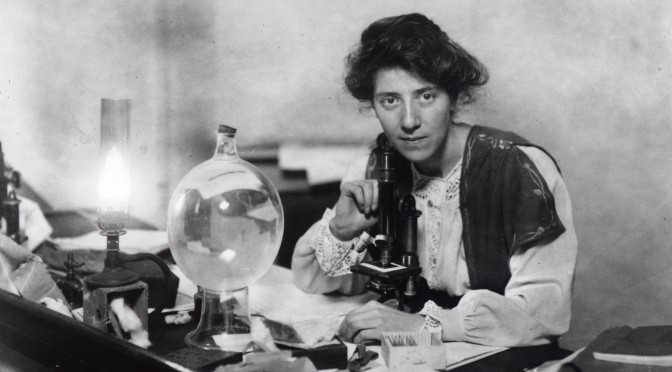
Jurassic Park, Botany and Women
By Robert-Jan Wille Classic dialogue in the classic movie Jurassic Park. The mathematician Ian Malcolm is rambling about the consequences of Jurassic Park and about the cloning of dinosaurs. At a certain moment he says: “God creates dinosaurs. God destroys dinosaurs. God creates man. Man destroys God. Man creates dinosaurs.” The witty palaeobotanist Ellie Sattler…
-
‘Knife-less’ Dissection: Functions of fold-outs in 19th century anatomical culture
By Simone Schleper Around 1900, an unprecedented panoply of anatomical fold-outs emerged and sold across Europe and North America. Examples ranged from life-size models to supplementary inserts in thick health manuals and booklet-thin charts. As illustrative devises, fold-outs responded to a growing demand for anatomical models and illustrations by a broad authorship and audience. Yet,…
-

Dutch movable stations in nature — “For a dime on the first row”?
By Robert-Jan Wille Recently, the British Antarctic Survey’s Rothera station has welcomed new guests. A group of Dutch scientists from the universities of Utrecht and Groningen and from the Royal Netherlands Institute for Sea Research arrived this season to do laboratory research, financially supported by the NWO, the Dutch NSF. Neither being able nor willing…
-
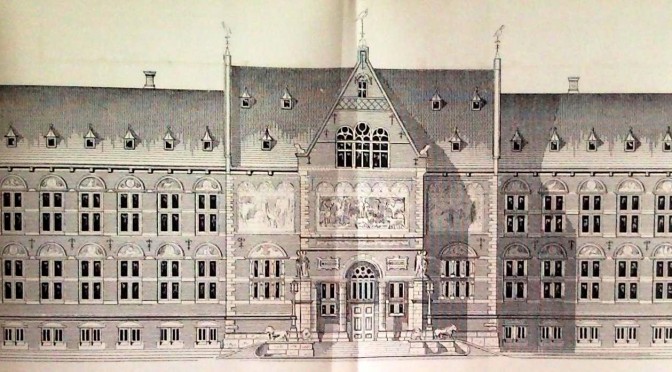
A Dutch national museum that was never meant to be
By Robert-Jan Wille In the 1870s, after the Franco-Prussian war, the art and sciences budget of the Netherlands increased dramatically. If the Dutch ever had an Victorian age in which some dreamt of cathedrals of science, it was then. In 1872-3 nearly 1,5 million guilders (quite a lot at that time) was reserved to upgrade…
-
Of Embryos and Transmutation IV – there and back again
By Robbert Striekwold Throughout the 19th century, ideas concerning embryonic and species development were joined together in a unification that many biologists took to be self-evident. Near the end of that century they split up, however, and embryology was largely left out of the Modern Synthesis of Darwin and Mendel. That is, until several spectacular…
-
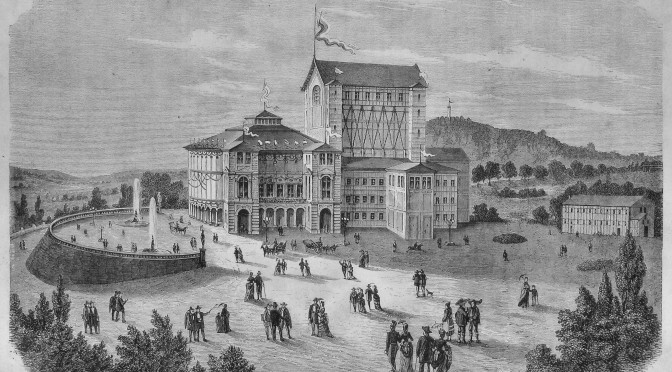
Positivisme en pianomuziek. De wankele vriendschap van Friedrich Nietzsche en Gabriel Monod
Door Camille Creyghton Gabriel Monod is enkel nog onder historici een enigszins bekende naam. Bij wie van hem gehoord heeft, roept hij waarschijnlijk associaties op met woorden als ‘positivisme’, ‘Revue historique’, en misschien met ‘seminarieonderwijs’. Daarmee houdt het wel op. Voor Friedrich Nietzsche is dat heel anders. Historici lezen van hem vooral zijn tweede oneigentijdse…
-
Philips’ Popular Manikin: Public Anatomy and Gender Stereotypes around 1900
By Simone Schleper Around 1800, the audience for anatomical knowledge was small and fairly elite. After the Anatomy Act of 1832 had put an end to the murders committed to procure bodies for dissection, the public image of anatomy became significantly less dreadful. In the following decades, popularizers, exhibitors, and publishers found ever more innovative…
-
Venster op de negentiende eeuw; of, een leven lang leren met Bouvard en Pécuchet
Door Daan Wegener Bouvard et Pécuchet (1881), Flauberts onvoltooide roman over twee mannen van middelbare leeftijd die zich toeleggen op een leven lang leren, biedt een uniek venster op de negentiende eeuw. Het is tegelijkertijd een miniatuur van de negentiende-eeuwse wetenschap, een lachspiegel waarin alle kennis verdraaid wordt, en een serieuze reflectie op contemporaine intellectuele…
-
Of Embryos and Transmutation III – Darwinian recapitulations
By Robbert Striekwold The name that is most often associated with recapitulation is that of Ernst Haeckel, who believed that the study of embryos provided the best means of reconstructing evolutionary history. In this he took his cue from Darwin, who wrote in 1860 that embryology was the “strongest single class of facts in favour…
-
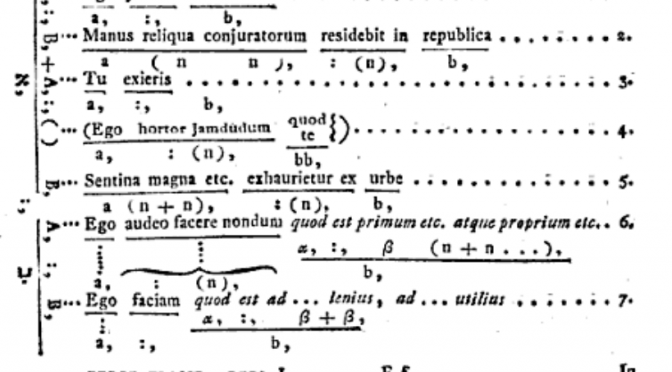
Een boomdiagram uit 1817
Door Floris Solleveld Soms is facebook nuttig bij je onderzoek, en niet alleen als afleiding. In december postte ik een schema uit Johannes Kinkers Inleiding tot eener wijsgerige algemeene theorie der taalen (1817), met als toelichting: “Universal Grammar or something like it as it was in 1817”. Een bevriende linguïst reageerde: “Stuk leesbaarder dan die…
-
Of Embryos and Transmutation. Part II – Malformations and Abortions
By Robbert Striekwold Theories of recapitulation arose in the late 18th but came to full bloom in the early 19th century. The common feature of such theories was the idea of a strong relationship between embryonic and species development. Such views were popular especially among the German Naturphilosophen, whose worldviews proved highly conductive to recapitulationist…
-
Of Embryos and Transmutation Part I – A Genealogy of Evolution
By Robbert Striekwold Ideas concerning species transformation and embryonic development enjoy a long and quirky history of perceived parallels and cross-pollination. In the first and introductory part of this series, I will take a look at the etymology of the word ‘evolution’ in biology. It entered the field as a term in embryology in the…
-
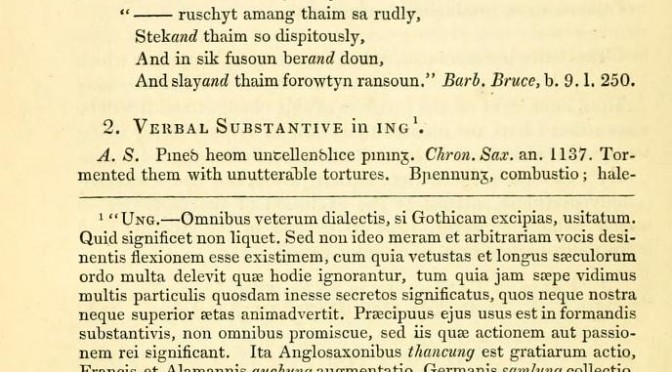
The Uses of Snobbery. How leaving out explanations kicked historical linguistics upward
By Floris Solleveld How many people could read Arabic script in Germany around 1800? The question struck me in 2006 as I was making my first steps in intellectual history with a paper on Friedrich Schlegel’s Über die Sprache und Weisheit der Indier (1808). Schlegel’s book – now considered a groundbreaking work in comparative linguistics…
-
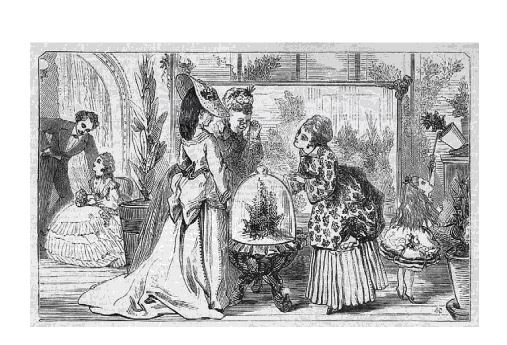
There is something about fern
By Constance Sommerey I like fern. I like the way fern unfolds itself, its elegance and its seemingly everlasting greenness. I really never gave this character trait of mine much thought. After all, it’s just fern. Yet, two years ago, something changed.
-
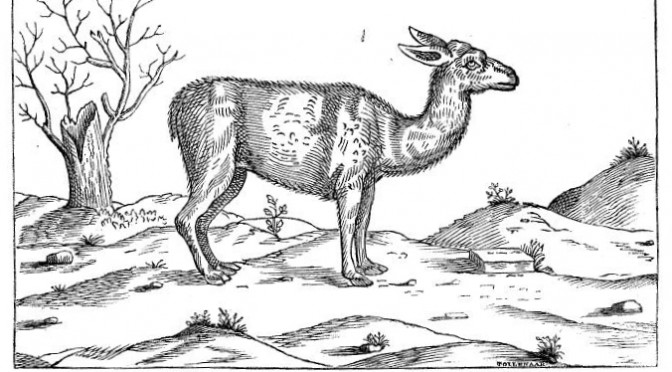
Een lama uit Middelburg
Door Jesper Oldenburger Komt het Texelse schaap echt uit Oost-Indië? Hoe kan het dat heel geleerd Europa denkt dat we onze schapen uit Azië gehaald hebben? Waar komt dit rare verhaal vandaan? Deze vragen stelde Professor Alexander Numan zichzelf in 1842 en zijn antwoorden en historische naspeuringen vormen een interessant inkijkje in hoe wetenschappelijk kopieergedrag…
-
Hysterische arbeiders en nerveuze burgers. Willy Hellpachs ‘Nervenleben und Weltanschauung’.
Door Jeroen Bouterse Soms zijn psychiaters eigenlijk ook cultuurfilosofen. Dan gaat het niet alleen over hedendaagse cultuurcritici als Dirk de Wachter of Theodore Dalrymple, maar ook over de Duitse ‘zenuwarts’ Willy Hellpach (1877-1955). Die vond een blik op alleen het fysiologische aspect van de kwalen van zijn patiënten duidelijk te beperkt, en verdiepte zich daarom maar grondig in…
